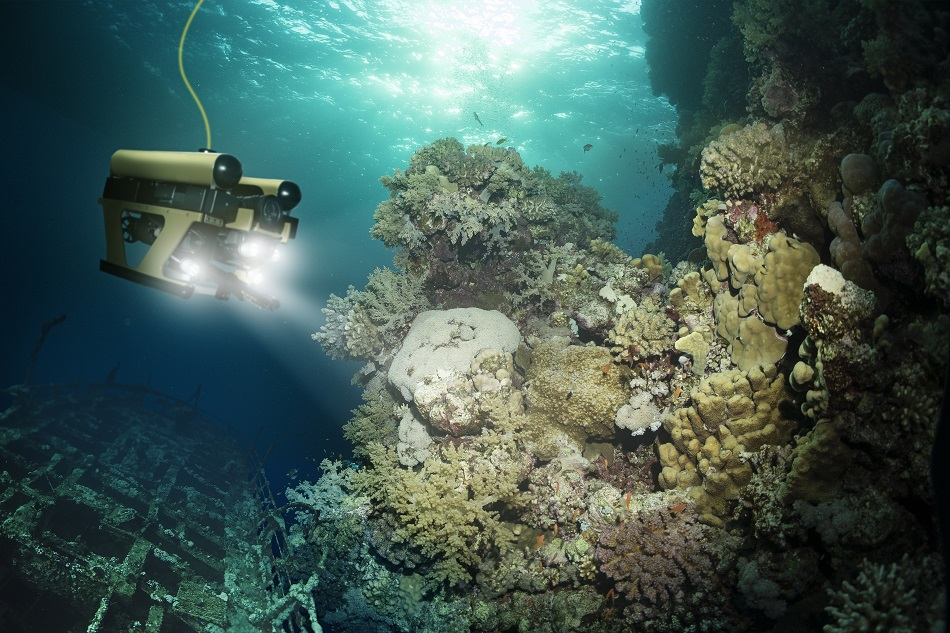
Image Credit: S.Bachstroem/Shutterstock.com
Several different spectroscopic techniques have been used to enhance the capabilities of robotic technologies, some of which include functional near-infrared spectroscopy, Raman spectroscopy and laser-induced breakdown spectroscopy (LIBS).
While many of these technological integrations remain in the early stages of development, this article will discuss some of the most recent developments in robotic devices that have been enhanced by both Raman spectroscopy and LIBS.
Raman Spectroscopy and Robot-Assisted Prostate Resections
Raman spectroscopy is a non-destructive light scattering technique that allows users to obtain detailed information on the various chemical properties of a given sample, such as its phase and polymorphism, crystallinity, and molecular interactions.
The use of Raman spectroscopy technologies during surgical procedures has been shown to improve the molecular specificity of distinguishing healthy tissue from cancerous tissue.
This highly sensitive detection is the result of tissue excitation with monochromatic light which results in inelastically scattered light.
One of the most recent applications of Raman spectroscopy within the field of robotics can be found in the da Vinci surgical platform used for the surgical excision of prostate cancer.
Traditional technologies that are used to resect prostates are often insufficient in their ability to remove all prostate tissue from the surgical cavity. As a result, subsequent clinical visits can show a rise in the blood level of prostate-specific antigen (PSA) in patients who have previously undergone a prostatectomy.
This false-positive test result can lead clinicians to inaccurately diagnose disease recurrence. To overcome the limitations associated with prostate resections, a group of researchers integrated Raman spectroscopy into the da Vinci robotic-assisted surgical system.
In their work, the researchers obtained measurements of Raman spectra at multiple angles in vivo directly at the surgical margin during the prostatectomy procedure.
In order to confirm the sensitivity of this approach, several ex vivo prostate measurements were also obtained. The Raman spectroscopy model used in this study was found to significantly improve the accuracy, sensitivity, and specificity of prostate and extra prostate tissue determination at a rate of 91%, 90.5%, and 96%, respectively.
Improving Underwater Robotic Sensitivity with LIBS
As underwater vehicles can be exposed to a wide variety of extreme environmental conditions, it is crucial for these vehicles to be equipped with highly sensitive sensing devices to ensure their safety.
Acoustic sensors have been traditionally used for underwater robotic purposes, but there has been a recent transition to develop sensors that more closely resemble the olfactory process.
Both laser-induced breakdown spectroscopy (LIBS) and laser-induced fluorescence (LIF), have been investigated for their ability to improve the sensitivity of underwater robotic sensors to detect and identify the various chemical elements surrounding underwater vehicles.
Previously, LIBS devices have demonstrated their ability to measure a wide range of chemical elements present within seawater and underwater mineral deposits. LIF sensing devices have similarly been shown to measure three different types of chlorophyll in order to differentiate between various life processes of phytoplankton in the ocean.
LIF sensors have also successfully detected and measured the concentrations of dissolved oil hydrocarbons present underwater. Recent work has incorporated both LIF and LIBS sensors into a robotic hand that was used to deliver laser radiation to objects of interest underwater.
While the robotic hand itself has not yet been used for this purpose, the evaluation of this sensor combination was found to improve underwater monitoring by vehicles, without requiring the use of large energy sources to power these small devices.
The sensitivity of these sensors is expected to significantly improve the ability of underwater robotics to control surrounding anthropomorphic complexes and vehicle movement.
Sources and Further Reading
- “What is Raman Spectroscopy?” – Horiba
- Pinto, M., Zorn, K. C., Tremblay, J., Desroches, J., Dellaire, F., et al. (2019). Integration of a Raman spectroscopy system to a robotic-assisted surgical system for real-time tissue characterization during radical prostatectomy procedures. Journal of Biomedical Optics 24(2). DOI: 10.1117/1.JBO.24.025001.
- Bukin, O., Proschenko, D., Cheklenok, A., Golik, S., et al. (2018). Laser Spectroscopic Sensors for the Development of Anthropomorphic Robot Sensitivity. Sensors 18(1680). DOI: 10.3390.s18061680.
Disclaimer: The views expressed here are those of the author expressed in their private capacity and do not necessarily represent the views of AZoM.com Limited T/A AZoNetwork the owner and operator of this website. This disclaimer forms part of the Terms and conditions of use of this website.